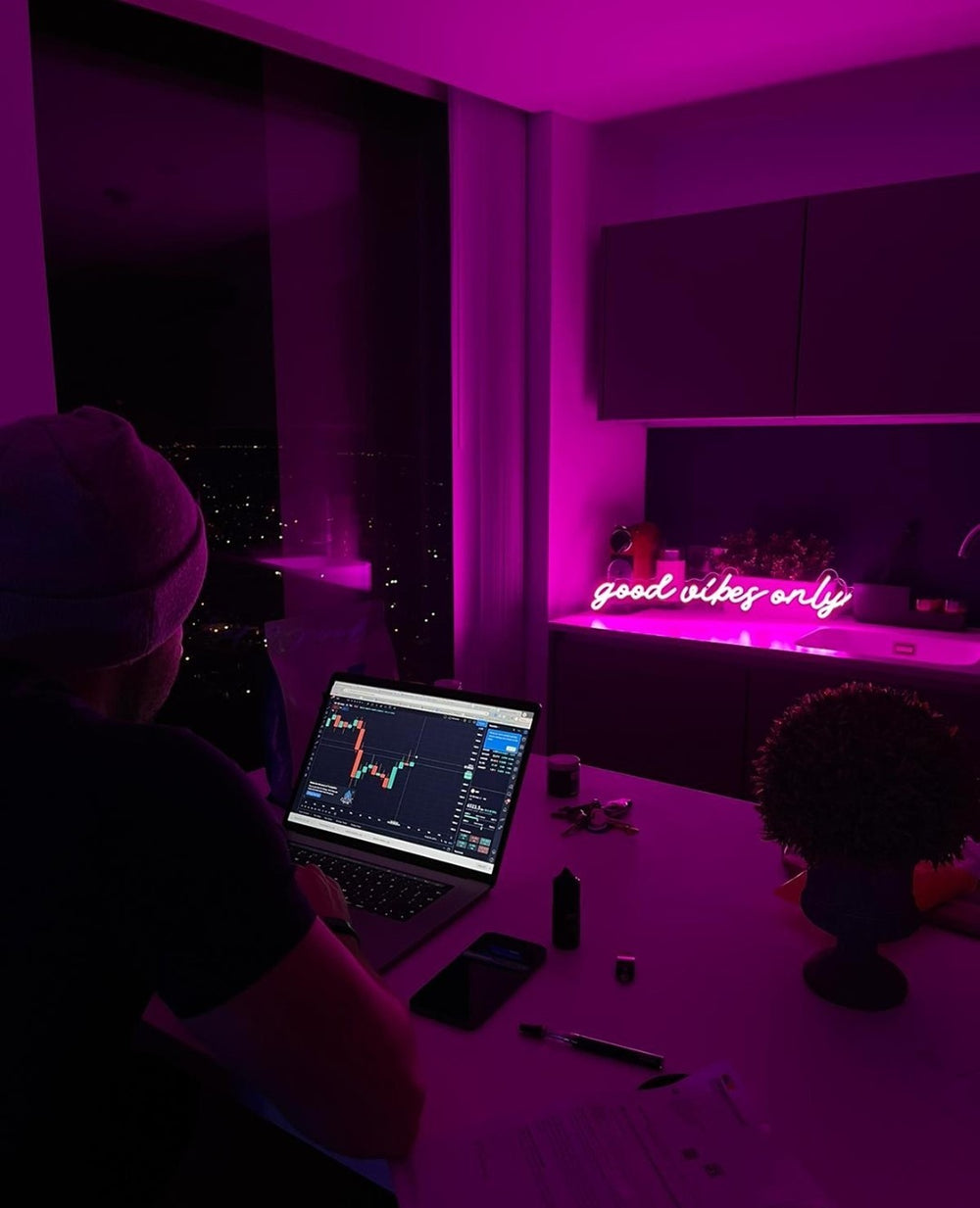Glass neon and LED neon

We see neon lights everywhere. How to find your way among all the ranges offered.
First of all, you have to differentiate between a glass neon light and an LED neon light.
Glass neon
The glass neon is the original neon. It was developed by the Frenchman Georges Claude in 1910. His idea was to bring neon gas and electricity into contact. The reaction of these two components gave an orange-red light.
Glass neon is the neon that you can still see in Las Vegas, in American diners and even in the streets of Hong Kong. The city has a large concentration of illuminated signs.
Neon in LED
Today, you will no doubt have noticed, LED neon has almost replaced traditional glass neon.
The LED neon tube brings comfort improvements to the glass tube. Creating a glass neon is working with glass, by definition. The profession is becoming increasingly rare, hence the development of neon LED workshops, particularly in Asia. It takes significantly less time to train someone capable of creating LED illuminated signs.
We also wanted to propose a list of attributes of each of the light tubes.
Neon glass:
- Longevity over time
- High tension
- Greater risk of breakage (transport/installation)
- Gas can be recharged
- Buzz
- Airtight tube for outdoor installation
Neon in LED:
- About 30K hours of light
- Infinite adaptation: logo, text, image
- Wide range of colors
- Quiet, stays at temperature
- Operates at low voltage (ours 12V)
- Installs easily thanks to the support
There are obviously different qualities of flexible LED neon. Small hint: if you receive two offers for a quote with a significant difference, it is necessarily because the offer does not offer services with the same tube qualities.
With prices that can vary from single to triple, what can you expect in terms of quality?
Not all LED tubes are created equal.
Here are the elements to compare in your search for custom LED neon lights.
Neon is made up of 3 elements:
- The LED neon tube
- The support
- Food
A. The LED neon tube
The neon tube is the key part of your neon. It is the one that will diffuse the light of your logo, first name, phrase or any other luminous creation.
The tube, generally made of PVC or Silicone, contains the LEDs which are connected in series (DIP type) or soldered onto a flexible printed circuit (SMD type).
The envelope encapsulates everything in a flexible tube which diffuses the light evenly in order to be as close as possible to a traditional glass neon tube.
A poor quality tube will leave points of light appearing and your neon will look like a Christmas garland.
The number of LEDs per linear meter will also affect the lighting effect. Less than 90 LEDs per meter, the LEDs will be too far apart creating dark areas in the tube. For optimal results, La Maison du Neon uses a quantity of 120 LEDs per meter.
The diameter of the tube also has an importance in the desired visual effect and in the lifespan of your LED neon. The LED, even if it remains at touch temperature, gives off little heat; trapped in a tube that is too thin/narrow, it will not be able to dissipate. This effect causes premature wear of your neon.
To be qualified, however. A thin neon tube (6 mm) may be suitable for neon that will be used for a short period during an event, for example, or a pop-up shop.
B. The LED neon tube
The support in general remains a fairly classic element of creations between 3 and 5 mm. We also offer ultra flexible support for rounded surfaces. We like to cut the support as close as possible to the neon for aesthetic reasons. There are also round/square/rectangle formats to choose from. That's the whole idea of creating custom neon.
C. Food
The LED operates at 12V. We provide a CE certified transformer with each neon. Each neon has a dedicated transformer due to the specific amperage of the same neon. We can supply a whole series of transformers on request, for example from the Meanwell brand. Renowned transformer brand on the market. The outdoor neon lights will also have the IP67 standard.
Glass neon or LED neon: Have you made your choice ?
The objective of this article is to provide as much information as possible about the two technologies: glass neon and LED neon.
We can often read that one technology is better than another.
We are not of this opinion. Glass or LED neon lights each bring their respective list of attributes. To have the noble side of the illuminated sign of yesteryear with its vintage colors and the buzz you will have to opt for a glass neon sign. On the other hand, to create a logo or text with a specific font, choose several colors, display your neon safely at home: we would direct you towards neon LED.
Our teams are available 6 days a week to answer your questions and define your illuminated sign project with you. An email myneonclub@gmail.com and tel +212 6 50 60 27 67.


